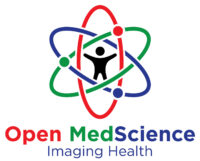Summary: The communication of imaging results is a crucial part of medical care that directly affects patients’ emotional wellbeing and trust in the healthcare system. This article explores the best practices for delivering imaging findings, with a special focus on serious diagnoses. It discusses the importance of timing, clarity, emotional sensitivity, and the role of multidisciplinary collaboration. Additionally, it offers insights into how digital tools and patient-centred approaches can help clinicians manage this delicate process more effectively.
Keywords: patient communication, imaging results, serious diagnosis, compassionate care, radiology, healthcare communication.
The Need for Thoughtful Communication
Medical imaging plays a central role in modern diagnostics, with results often determining the direction of patient management. However, the way in which these results are communicated to patients can be just as critical as the findings themselves. A clear, compassionate, and timely conversation can significantly reduce anxiety, promote understanding, and support shared decision-making. Conversely, poor communication can lead to confusion, distress, and a breakdown in the patient-clinician relationship.
When imaging reveals a serious or life-changing diagnosis—such as cancer, degenerative neurological disease, or advanced organ failure—the method of disclosure can influence how a patient processes the information, engages with their treatment, and copes emotionally. This article examines best practices for communicating imaging results to patients, focusing on how to deliver serious news with empathy, honesty, and professionalism.
Imaging results are often highly technical and may require interpretation by specialists. For patients, these results can mark the turning point in their healthcare journey. Miscommunication or overly clinical delivery can leave patients feeling lost and overwhelmed. It is vital that healthcare providers bridge the gap between technical precision and human understanding.
Patients have a right to timely and accurate information about their health. However, the need for speed should not override the necessity of emotional preparedness and appropriate context. Clinicians must find a balance between clinical urgency and patient-centred communication, particularly when delivering distressing news.
Who Should Deliver the Results?
One of the ongoing challenges in imaging communication is determining who should convey the results. Radiologists are the experts interpreting the images, but they often work behind the scenes. Referring clinicians, such as general practitioners, oncologists, or neurologists, typically have an established rapport with the patient and are better positioned to discuss the results within the broader clinical context.
Ideally, imaging findings—especially when serious—should be conveyed by a clinician who understands the patient’s medical history, has the communication skills to handle sensitive discussions and can address follow-up plans. In some settings, radiologists are increasingly participating in direct communication with patients, particularly in breast imaging clinics. While this model has its benefits, it requires training and institutional support to be successful.
Preparing for the Conversation
Before discussing results, clinicians should prepare thoroughly. This includes reviewing the imaging report, understanding its clinical implications, and anticipating the patient’s emotional reaction. If the results are severe or ambiguous, it is important to have a plan in place for further tests, referrals, or support.
Clinicians should choose an appropriate setting—ideally, a quiet, private space free from interruptions. Non-verbal cues, such as sitting down, maintaining eye contact, and adopting an open posture, help create a supportive atmosphere. Where possible, patients should be offered the opportunity to bring a family member or friend to the appointment.
Preparation also involves readiness to answer questions. Patients may want to know the meaning of specific terms, the reliability of the results, or what the next steps are. Having clear and honest answers ready demonstrates professionalism and builds trust.
Timing and Transparency
Patients often wait anxiously for imaging results, and delays can cause unnecessary stress. Where possible, results should be shared as soon as they become available and interpreted appropriately. However, rushing to deliver complex results without full understanding can lead to misinformation or false reassurance.
Transparency is key. Even when the results are uncertain or require further investigation, patients appreciate being kept informed about their condition. Phrases like “We don’t yet have a final answer, but here is what we know so far” can reassure patients that they are not being kept in the dark.
Clinicians must avoid sugar-coating bad news or using vague euphemisms. Patients deserve the truth, delivered in a manner that is honest but compassionate. Clear language should be used, avoiding excessive medical jargon. For instance, saying “The scan shows a growth that looks like cancer” is more helpful than “There’s a suspicious lesion”.
Delivering Serious Diagnoses
When imaging confirms a serious diagnosis, the way the news is shared can have long-lasting emotional effects. Research shows that patients value honesty but also kindness and time to absorb the news. A well-structured approach can support this process.
The SPIKES protocol is one widely accepted method. It involves six steps: Setting up the interview, assessing the patient’s Perception, obtaining the patient’s Invitation to share information, giving Knowledge, addressing Emotions, and Summarising the plan. Although originally developed in oncology, it is also useful for a range of serious medical conditions.
The clinician should begin by asking what the patient already knows or suspects. This helps gauge readiness and identify misconceptions. Information should then be delivered in small, digestible pieces, checking for understanding along the way. Allowing silence, acknowledging emotions, and offering support are all vital aspects of compassionate communication.
Patients may respond with shock, fear, or denial. Clinicians should resist the urge to “fix” these emotions or move the conversation along too quickly. Simply being present, listening, and validating the patient’s experience can be immensely therapeutic.
The Role of Empathy and Language
Empathy is not just about kindness—it is a professional skill that can be learned and refined. Using empathetic language helps patients feel heard and supported. Phrases like “I can see this is very difficult to take in” or “I’m here to answer your questions whenever you’re ready” can go a long way.
The tone of voice, pacing, and choice of words all matter. Using the patient’s name, personalising the conversation, and avoiding detached or overly technical explanations can help the patient feel less like a “case” and more like a person.
Written summaries, patient information leaflets, and visual aids can also enhance understanding, particularly when patients are emotionally overwhelmed. Offering to follow up with a phone call or additional appointment gives patients time to formulate questions after the initial shock subsides.
Cultural Sensitivity and Health Literacy
Communication styles must also be adapted to the patient’s cultural background and level of health literacy. Some patients may prefer direct communication, while others may value family involvement or require information presented within the context of their cultural or religious beliefs.
Clinicians should avoid assumptions and, where possible, ask patients about their preferences. Interpreters should be used where language barriers exist, and written materials should be offered in the patient’s preferred language and at an appropriate reading level.
In communities with a history of mistrust in healthcare institutions, transparent and respectful communication is especially crucial. Trust can only be built through sustained, respectful dialogue and a genuine commitment to patient autonomy.
The Digital Age and Result Communication
In the era of electronic health records and patient portals, many patients have access to their imaging results before they are discussed with a clinician. While this empowers some patients, it can cause confusion and distress if the report is ambiguous or includes alarming terminology.
Healthcare systems must ensure that digital result delivery is accompanied by clear explanations, either through follow-up calls, embedded lay summaries, or prompt appointments. Training clinicians to write radiology reports with both technical precision and patient readability in mind could help bridge this gap.
Some forward-thinking institutions are trialling “radiology navigators” or patient liaisons who help interpret results and guide patients through the next steps. Although resource-intensive, this model has demonstrated promise in enhancing patient satisfaction and understanding.
Supporting the Clinicians
Delivering difficult news takes an emotional toll on clinicians as well. Institutions should provide training in communication skills and offer opportunities for debriefing and peer support. Fostering a culture where compassion is valued as much as clinical excellence benefits both staff and patients.
Clinicians should also be encouraged to reflect on their communication style and seek feedback from patients or colleagues to enhance their effectiveness. Empathy and clarity are not fixed traits—they are skills that can be developed and refined over time.
Conclusion
Clear and compassionate communication of imaging results is a critical aspect of modern healthcare. When done well, it empowers patients, supports informed decision-making, and fosters trust. When handled poorly, it can lead to confusion, distress, and alienation.
Best practice involves choosing the right messenger, preparing thoroughly, delivering news honestly and sensitively, and following up with support. Whether the results are reassuring or life-changing, patients deserve to receive them in a way that respects their dignity and acknowledges their humanity.
By embracing a patient-centred approach, supported by training, technology, and institutional commitment, the healthcare profession can ensure that the process of communicating imaging results becomes a bridge to healing—not a source of harm.
Disclaimer
Breaking the Silence: Communicating Imaging Results to Patients with Clarity and Compassion is an educational article published by Open Medscience for general informational purposes only. The content reflects the views and understanding of the authors at the time of publication and is not intended as a substitute for professional medical advice, diagnosis, or treatment. Healthcare professionals must use their clinical judgment in each individual case, and patients should consult their medical providers for guidance specific to their circumstances.
Open Medscience does not accept responsibility for any actions taken based on the content of this article. While every effort has been made to ensure the accuracy of the information, Open Medscience makes no warranties regarding its completeness or suitability for any particular purpose. Inclusion of protocols, strategies, or practices does not imply endorsement, and local policies or regulations may vary.
Readers are encouraged to seek appropriate professional advice before acting on any information contained within this publication.
You are here: home » diagnostic medical imaging blog »



